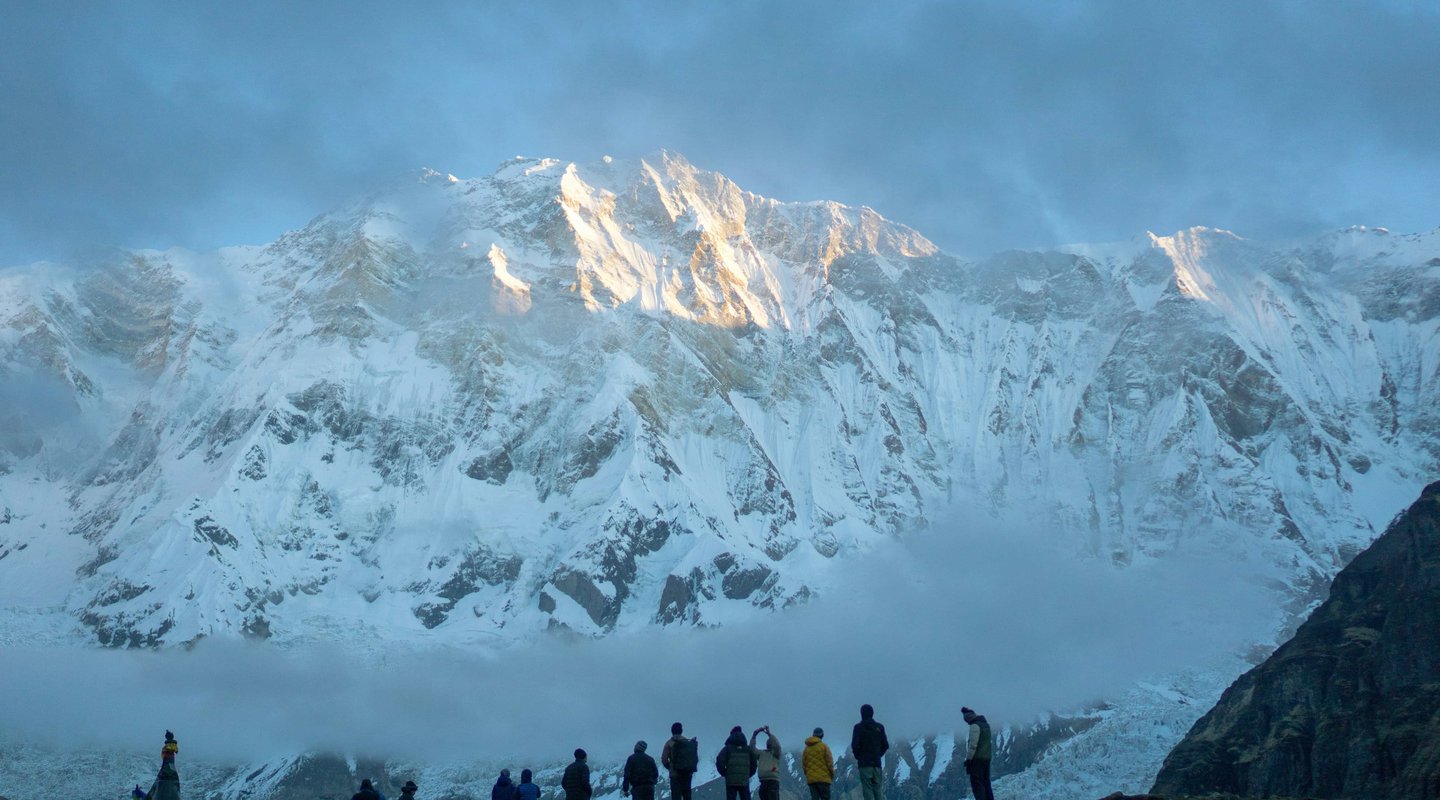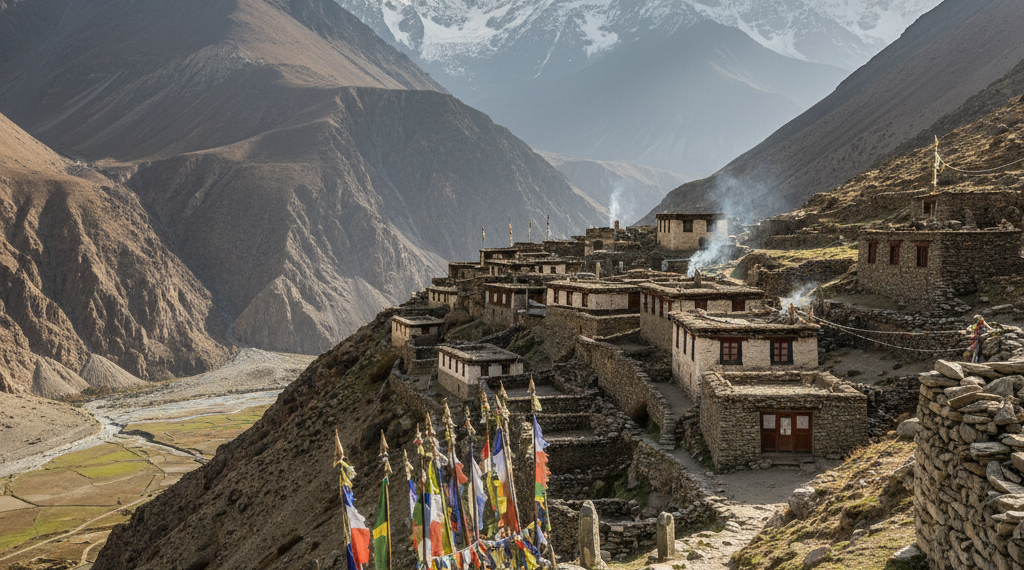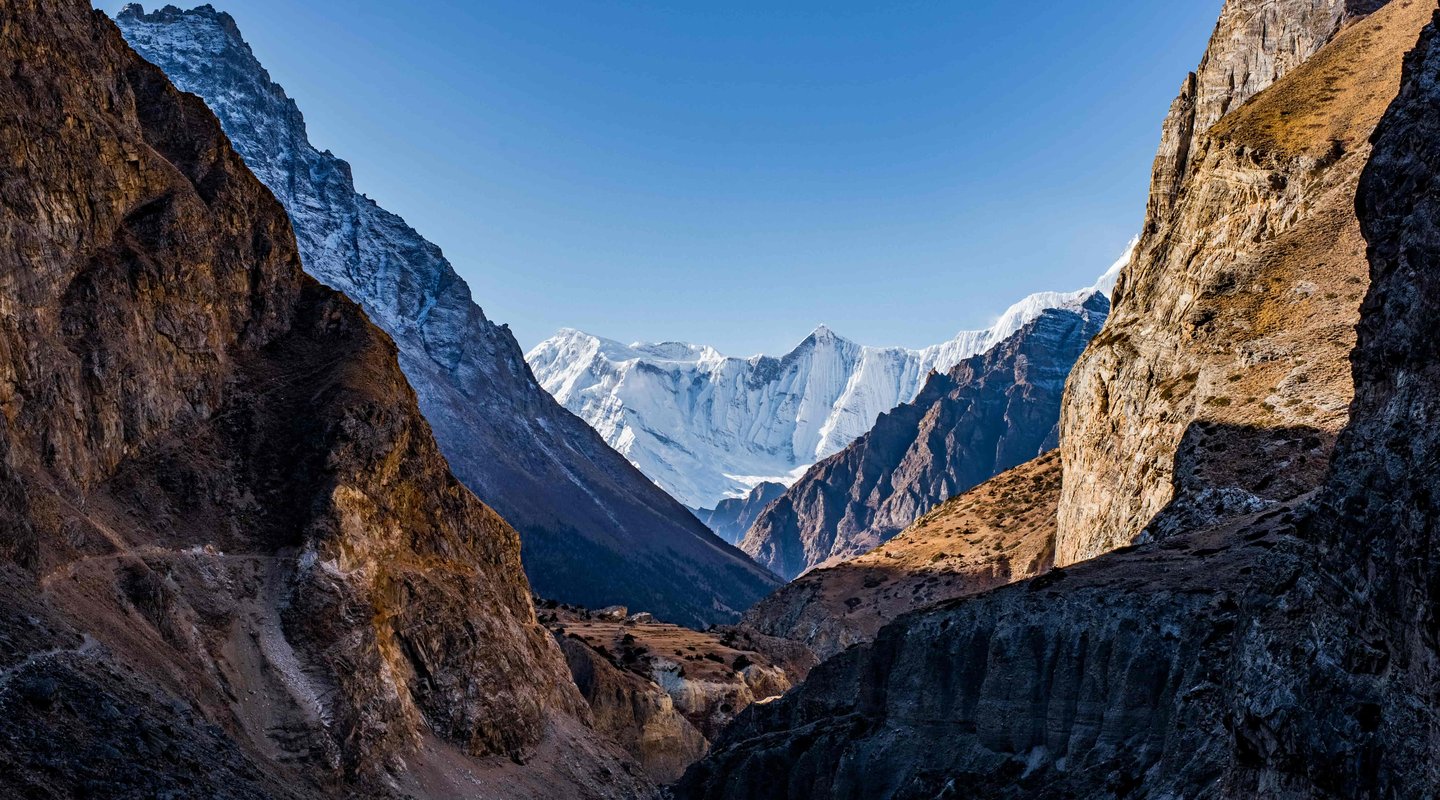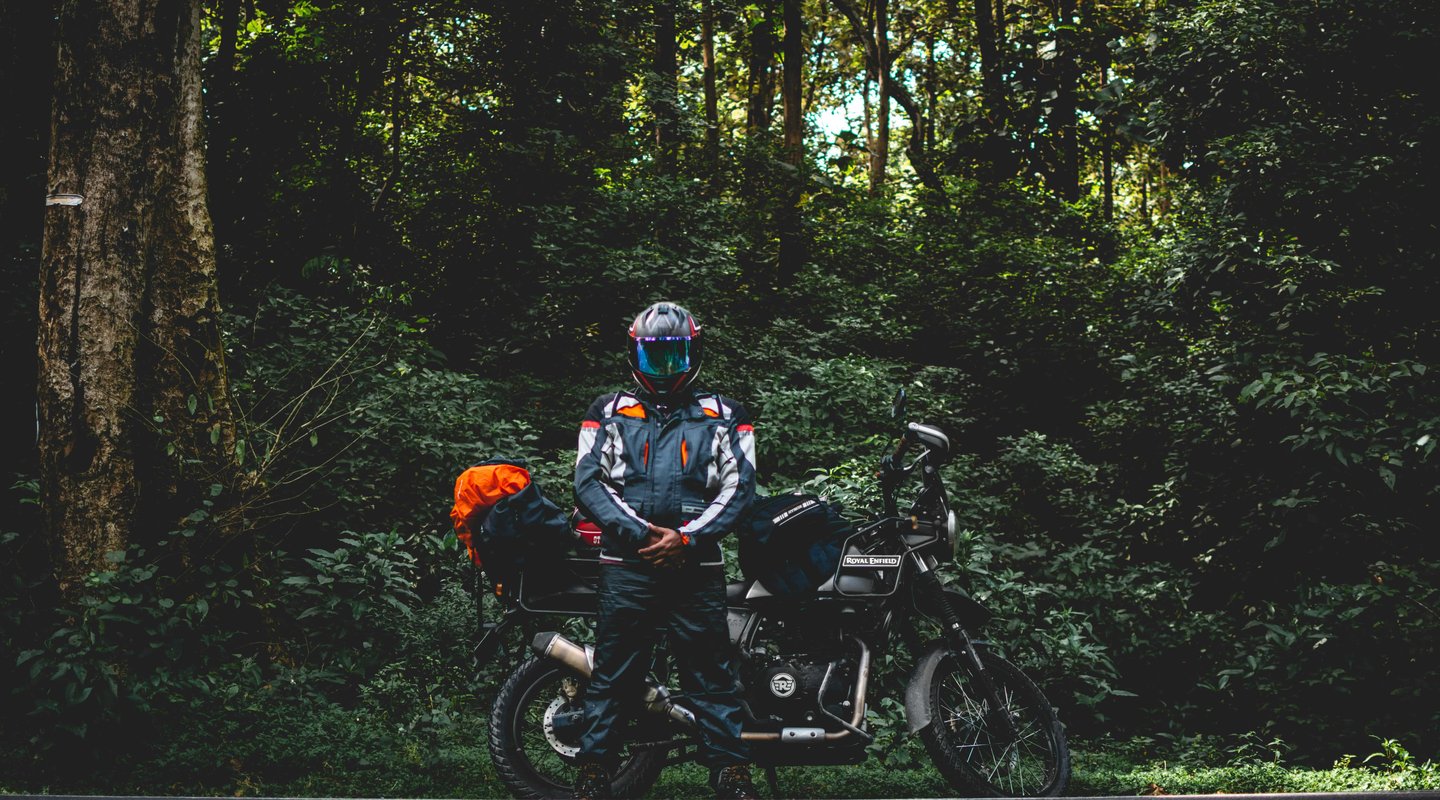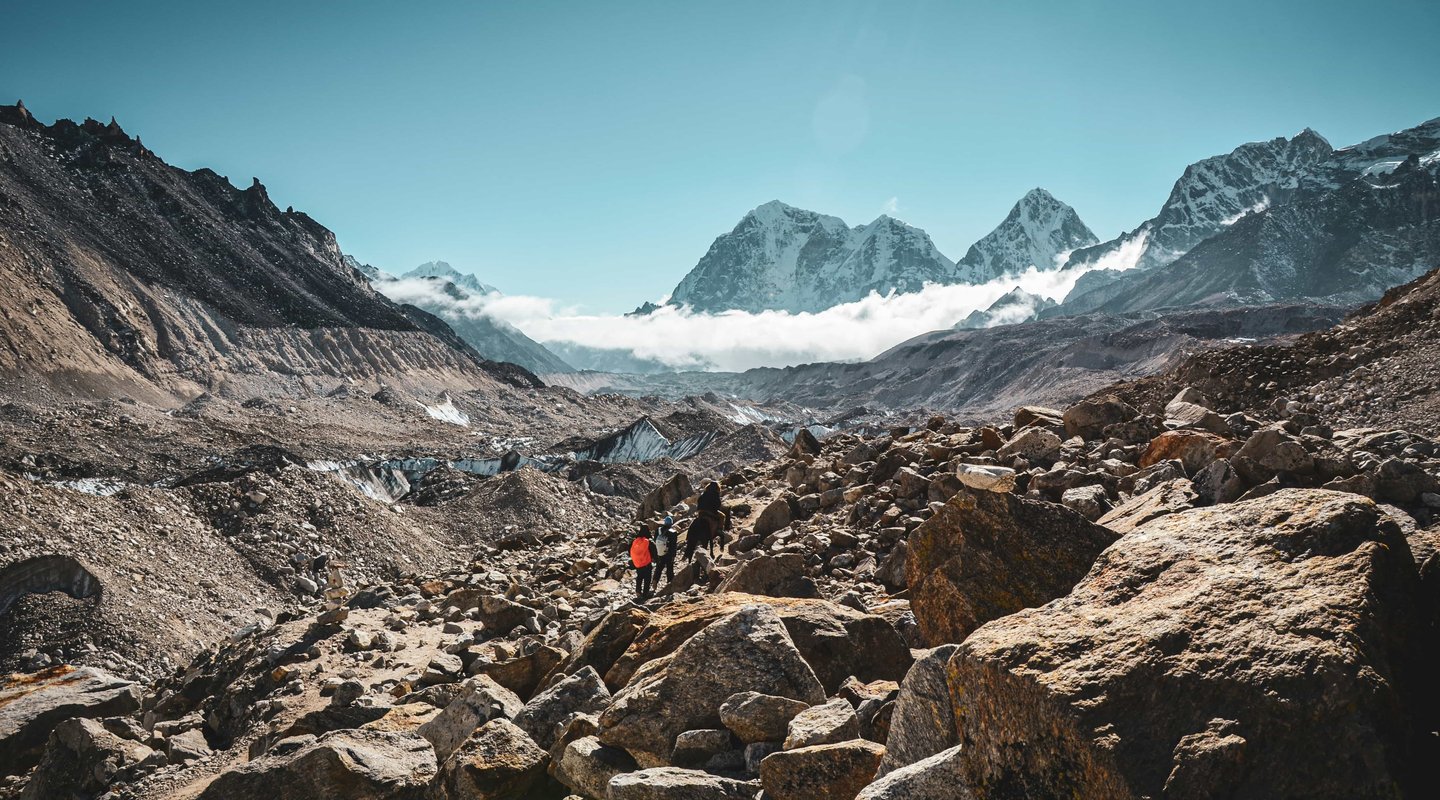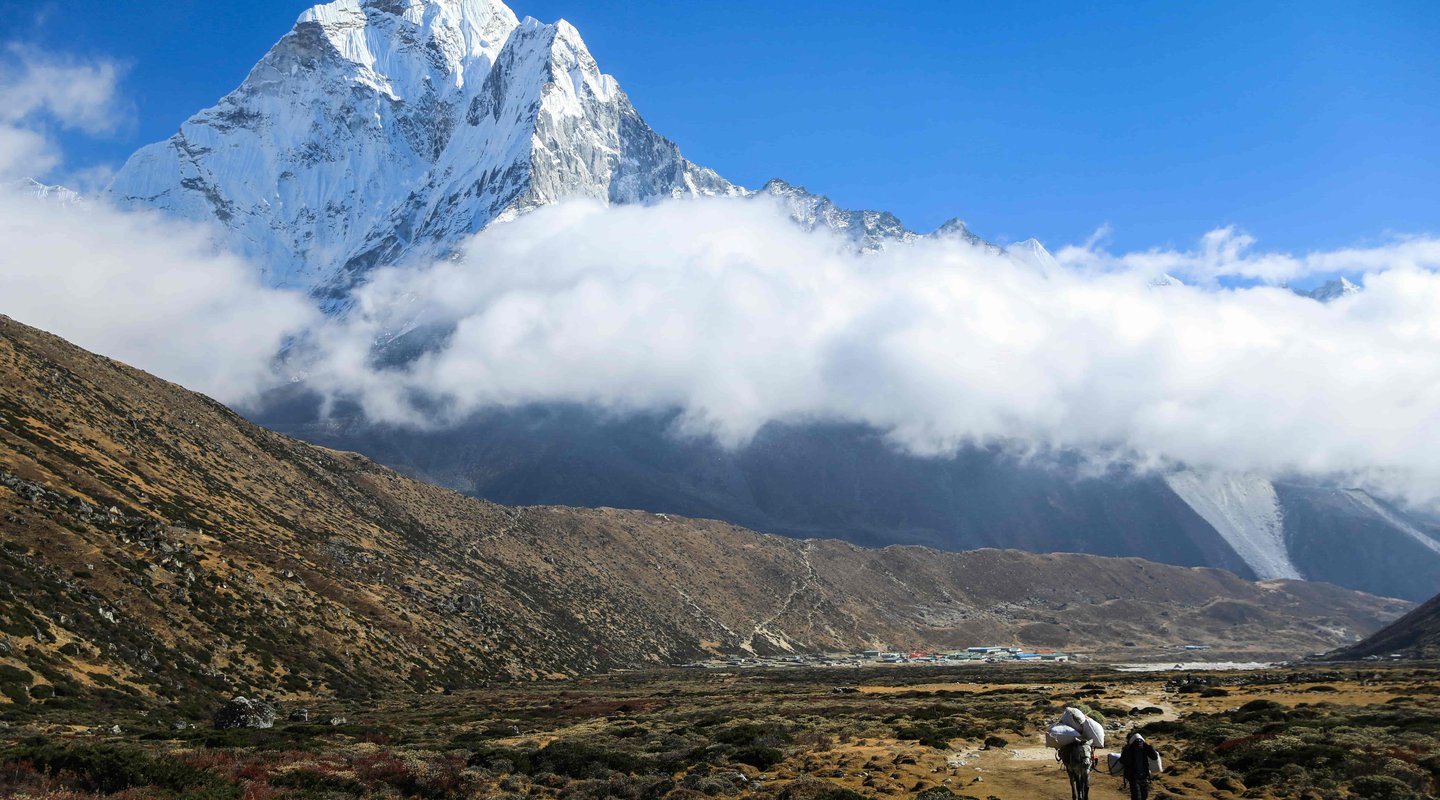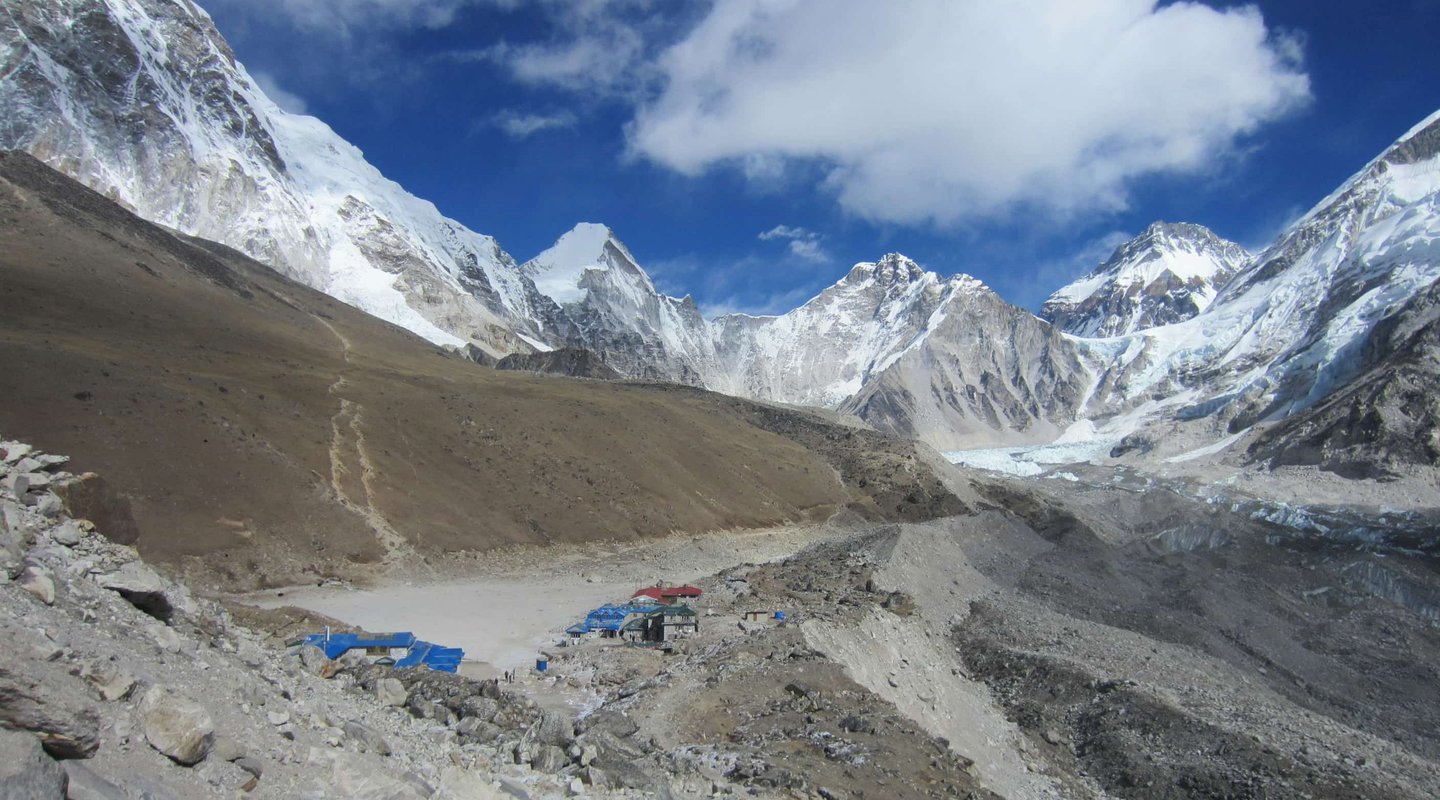Standing at the crossroads between two of Nepal's most captivating treks can feel overwhelming. The Nar Phu Valley trek and Annapurna Circuit trek both promise life-changing experiences, yet they cater to remarkably different trekking styles and preferences. Whether you're drawn to the remote Tibetan villages in Nepal or the established trail networks with comfortable lodges, this comprehensive comparison will help you make the perfect choice for your Himalayan adventure.
Trek Overviews: Understanding Each Journey's Unique Character
The Hidden Gem: Nar Phu Valley Trek
The Nar Phu Valley trek represents one of Nepal's best-kept secrets, opened to foreign trekkers only in 2003. This off-the-beaten-path trek in Nepal takes you through ancient Tibetan settlements that have remained virtually unchanged for centuries, offering an authentic glimpse into traditional Himalayan life.
Key highlights of the Nar Phu experience include:
- Medieval stone villages of Nar and Phu, where time seems frozen
- Ancient Buddhist monasteries Annapurna region are rarely visited by outsiders
- Crossing the challenging Kang La Pass at 5,320 meters
- Dramatic gorges and narrow canyons create otherworldly landscapes
- Intimate cultural encounters with fewer than 300 residents in the entire valley
The Classic Route: Annapurna Circuit Trek
The Annapurna Circuit trek has earned its reputation as one of the world's most diverse and rewarding high-altitude Nepal treks. Following ancient salt trading routes, this journey circumnavigates the entire Annapurna massif, showcasing an incredible variety of landscapes from subtropical forests to arctic-like high passes.
Distinguished features of the Annapurna Circuit include:
- The iconic Thorong La Pass crossing at 5,416 meters
- The Sacred Muktinath pilgrimage site is revered by Hindus and Buddhists
- Diverse ecosystems ranging from rice paddies to alpine meadows
- Well-developed infrastructure with established lodges throughout
- Optional side trips to Tilicho Lake, one of the world's highest lakes
- The deep Kali Gandaki Gorge, considered the world's deepest
Difficulty & Altitude Challenges: Comparing Physical Demands
Which is Harder, Nar Phu or Annapurna Circuit?
Both treks present significant altitude challenges, but the Nar Phu Valley trek generally demands more technical skills and mental fortitude. The remoteness factor adds an extra layer of difficulty, as evacuation options are limited compared to the well-traveled Annapurna Circuit.
Essential fitness and preparation considerations:
- Kang La Pass requires rope assistance in some sections during winter
- Thorong La Pass, while higher, follows a more gradual approach
- Nar Phu involves more consecutive days above 4,000 meters
- Annapurna Circuit offers better acclimatization with its gradual ascent profile
- Both require solid cardiovascular fitness and high-altitude training
- Previous trekking experience strongly recommended for Nar Phu
Altitude Acclimatization Strategies
The Annapurna Circuit's design naturally incorporates rest days in places like Manang Valley, making acclimatization more manageable. The Nar Phu trek's compressed itinerary requires trekkers to be more vigilant about altitude sickness symptoms and potentially add extra acclimatization days.
Permits & Regulations: Navigating the Paperwork
Nar Phu Valley Trek Permit Requirements
The restricted nature of Nar Phu Valley means additional bureaucracy and costs. Trekkers must obtain a Restricted Area Permit (RAP) costing $100 per week from September to November, and $75 per week during other seasons.
Complete permit checklist for Nar Phu:
- Restricted Area Permit (RAP) - mandatory
- ACAP permit ($30) for Annapurna Conservation Area
- TIMS card (Trekkers' Information Management System)
- Minimum group size of 2 people required
- A Licensed guide is mandatory by law
- Permits are only available through registered trekking agencies
Annapurna Circuit Permit Structure
The Annapurna Circuit follows standard trekking regulations with significantly lower costs. Independent trekking remains possible, though hiring guides is increasingly recommended for safety.
Standard Annapurna Circuit requirements:
- ACAP permit ($30) valid for the entire trek
- TIMS card for trek registration
- No restricted area permits needed
- Solo trekking permitted (though not recommended)
- The Guide is optional but highly advised for the Thorong La crossing
Accommodation & Food: Remote Tea Houses vs Established Lodges
Nar Phu Valley: Authentic but Basic
The remote tea houses along the Nar Phu trek offer genuine hospitality but limited amenities. Expect simple stone structures with basic bedding and shared facilities, creating an authentic but challenging experience.
Accommodation realities in Nar Phu:
- Limited menu options (dal bhat, noodles, potatoes)
- Solar power only, often unreliable
- No hot showers in most villages
- Sleeping bags are essential year-round
- Homestay experiences in Phu village
- Emergency shelter huts between villages
Annapurna Circuit: Comfort in the Mountains
The established lodges throughout the Annapurna Circuit provide surprising comfort at altitude. From pizza in Manang to apple pie in Marpha, the culinary variety reflects decades of catering to international trekkers.
Annapurna accommodation advantages:
- Extensive menu options, including Western dishes
- Hot showers are available (for a fee) in most lodges
- Wi-Fi and charging stations are increasingly common
- Private rooms available in popular stops
- Bakeries and cafes in larger villages
- Emergency facilities and health posts along the route
Scenery & Cultural Highlights: Landscapes and Living Heritage
Nar Phu Valley's Hidden Treasures
The dramatic landscapes of Nar Phu feel almost extraterrestrial, with ancient glaciers carving deep valleys and colorful rock formations. The Tibetan influence pervades every aspect of life, from prayer wheels to yak herding traditions.
Unmissable cultural experiences in Nar Phu:
- Tashi Lhakhang Monastery with 800-year-old Buddhist artifacts
- Traditional sky burial sites (viewed respectfully from a distance)
- Authentic Tibetan New Year celebrations if timing aligns
- Ancient trading post ruins along forgotten caravan routes
- Unique architecture featuring flat-roofed stone houses
- Traditional weaving and yak wool processing demonstrations
Annapurna Circuit's Diverse Tapestry
The Annapurna Circuit showcases Nepal's incredible diversity, transitioning from Hindu villages in the lowlands to Buddhist monasteries Annapurna high country. Each day brings new ecosystems and cultural encounters.
Scenic and cultural highlights include:
- Sunrise views over the Annapurna and Dhaulagiri ranges
- Muktinath pilgrimage site with eternal flames
- Traditional Thakali culture in Marpha village
- Rhododendron forests bloom in spring
- Ice Lake and Gangapurna Glacier viewpoints
- Historic trading town of Kagbeni at Mustang's gateway
Best Seasons & Weather Conditions
Best Time to Trek Nar Phu Valley
The remote location and high passes make timing crucial for Nar Phu. Spring (March-May) and autumn (September-November) offer the most stable conditions, though each season brings unique advantages.
Seasonal trekking considerations for Nar Phu:
- Spring brings rhododendron blooms, but possible afternoon clouds
- Autumn offers crystal-clear mountain views and stable weather
- Winter trekking is possible, but Kang La Pass may require technical equipment
- The Monsoon season is extremely challenging with landslide risks
- September is ideal for witnessing harvest activities
- Late October to November showcases pristine mountain vistas
Best Season for Annapurna Circuit
The Annapurna Circuit's lower sections remain accessible year-round, though Thorong La Pass closures can occur in heavy winter snow. The established infrastructure makes weather challenges more manageable.
Annapurna Circuit seasonal planning:
- Peak seasons (October-November, March-April) mean crowded trails
- Winter offers solitude but requires proper gear below Thorong La
- Monsoon affects the lower sections more than the high passes
- Spring rhododendron displays particularly spectacular
- Autumn harvests create golden terraced landscapes
- December-February possible with flexibility for weather windows
Cost & Logistics: Budget Comparison and Access
Nar Phu Valley Trek Permit Cost vs Annapurna Economics
The restricted status of Nar Phu significantly impacts overall costs. Between permits, mandatory guides, and limited accommodation options, budget-conscious trekkers might find the expenses challenging.
Comprehensive cost breakdown for Nar Phu (per person):
- Restricted Area Permit: $100-200 depending on duration
- ACAP and TIMS: $40 combined
- Guide fees: $25-30 per day (mandatory)
- Porter services: $20-25 per day (recommended)
- Accommodation: $5-10 per night
- Meals: $20-30 per day
- Total 10-day budget: $1,500-2,000, including permits
Annapurna Circuit Budget Flexibility
The Annapurna Circuit accommodates various budgets, from backpacker-friendly to luxury lodge experiences. Independent trekking options significantly reduce costs for experienced hikers.
Annapurna Circuit cost estimates:
- Permits: $40 total (ACAP and TIMS)
- Guide fees: $25-30 per day (optional)
- Porter services: $20-25 per day (optional)
- Accommodation: $5-15 per night, depending on altitude
- Meals: $15-35 per day with menu variety
- Total 14-day budget: $800-1,500 for independent trekkers
Trek Itineraries: Nar Phu 10 Days vs Annapurna 14 Days
The Nar Phu Valley trek typically follows a 10-12 day itinerary starting from Koto, while the classic Annapurna Circuit requires 14-18 days from Besisahar. Many trekkers now combine both, creating an ultimate 18-21-day adventure.
Which Trek is Right for You? Making the Final Decision
Nar Phu Valley Side Trip on Annapurna Circuit
For those unable to choose, combining both treks offers the ultimate Himalayan experience. Adding Nar Phu as a detour from the Annapurna Circuit requires an extra 4-5 days but provides unparalleled cultural immersion.
Choose Nar Phu Valley if you value:
- Authentic cultural experiences away from crowds
- Challenging, remote trekking environments
- Tibetan Buddhist culture and traditions
- Exclusive access to restricted areas
- Intimate group experiences with mandatory guides
- Photography opportunities in untouched landscapes
Choose Annapurna Circuit if you prefer:
- Established trails with emergency support
- Menu variety and comfortable lodging
- Flexibility to trek independently
- Diverse landscapes from jungle to desert
- Meeting international trekkers along the way
- Options for shorter sections or side trips
Should I Do Nar Phu or Annapurna Circuit as a Beginner?
For those new to high-altitude trekking, the Annapurna Circuit provides a safer, more supported introduction to Himalayan trekking. The Nar Phu trek for beginners is possible but requires thorough preparation and accepting higher risks.
Frequently Asked Questions
Do I need a guide in Nar Phu Valley?
Yes, guides are mandatory for the Nar Phu Valley trek due to its restricted area status. The regulation requires a licensed guide and a minimum group size of two trekkers.
Which trek is better for beginners?
The Annapurna Circuit offers better infrastructure and support for beginners. Its gradual altitude gain, established lodges, and emergency evacuation options make it more suitable for first-time high-altitude trekkers.
Can I combine both treks?
Absolutely! Many trekkers add Nar Phu as a 4-5 day detour from the Annapurna Circuit, typically accessing it from Koto. This combination requires approximately 18-21 days total and additional permits.
What's the main difference in cultural experiences?
Nar Phu offers deep immersion in Tibetan Buddhist culture with minimal outside influence, while Annapurna Circuit showcases Nepal's diverse ethnic tapestry from Hindu lowlands to Buddhist highlands.
How difficult is Kang La Pass compared to Thorong La Pass?
While Thorong La sits 96 meters higher, Kang La Pass presents more technical challenges with steeper approaches and potential rope sections. Both require excellent acclimatization and weather windows.
Is altitude sickness more likely on one trek?
The Nar Phu Valley's compressed itinerary and consecutive high-altitude days pose greater risks. The Annapurna Circuit's gradual ascent profile and established acclimatization stops in Manang Valley provide better altitude adaptation.
Making Your Himalayan Dream a Reality
The choice between Nar Phu Valley and Annapurna Circuit ultimately reflects your personal trekking philosophy and adventure goals. Those seeking solitude and authentic Tibetan culture will find Nar Phu Valley irresistible despite its challenges, while trekkers valuing diversity and established infrastructure will discover the Annapurna Circuit delivers one of the world's most complete mountain experiences. Whether you're drawn to remote villages or iconic mountain passes, proper preparation and respect for local cultures will guarantee memories that last forever. Ready to start planning? Explore our expertly crafted Nar Phu Valley trek package.
or join our popular 14-day Annapurna Circuit adventure. As a leading trekking company in Nepal, Himalayan Hero Adventures specializes in both these incredible journeys, offering expert guides and customized itineraries to match your adventure style.
Ready to explore Nepal's hidden gem? Contact Himalayan Hero Adventures today:
📧 Email: [email protected]
📱 WhatsApp: +9779801127073
🌐 Website: himalayanhero.com

